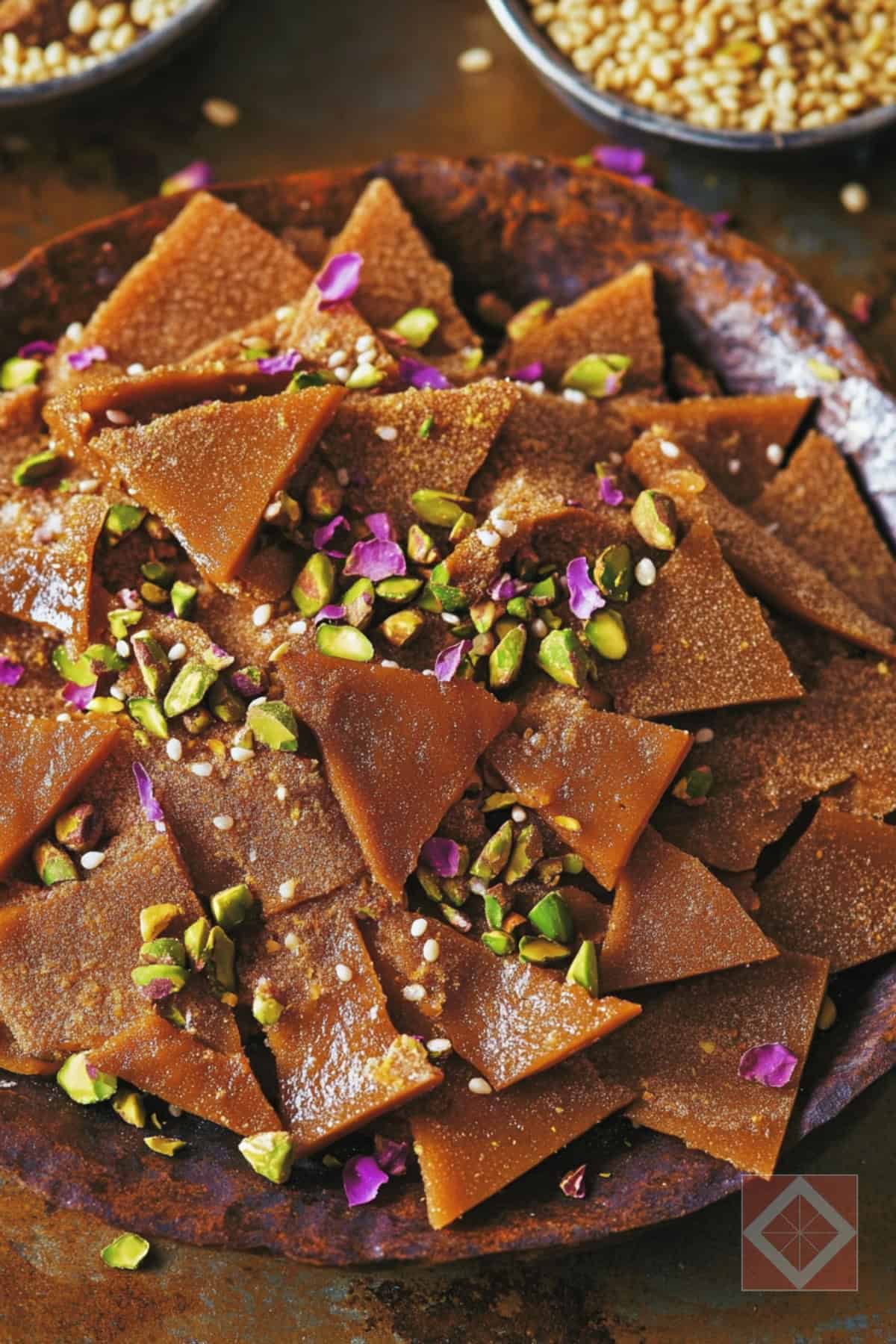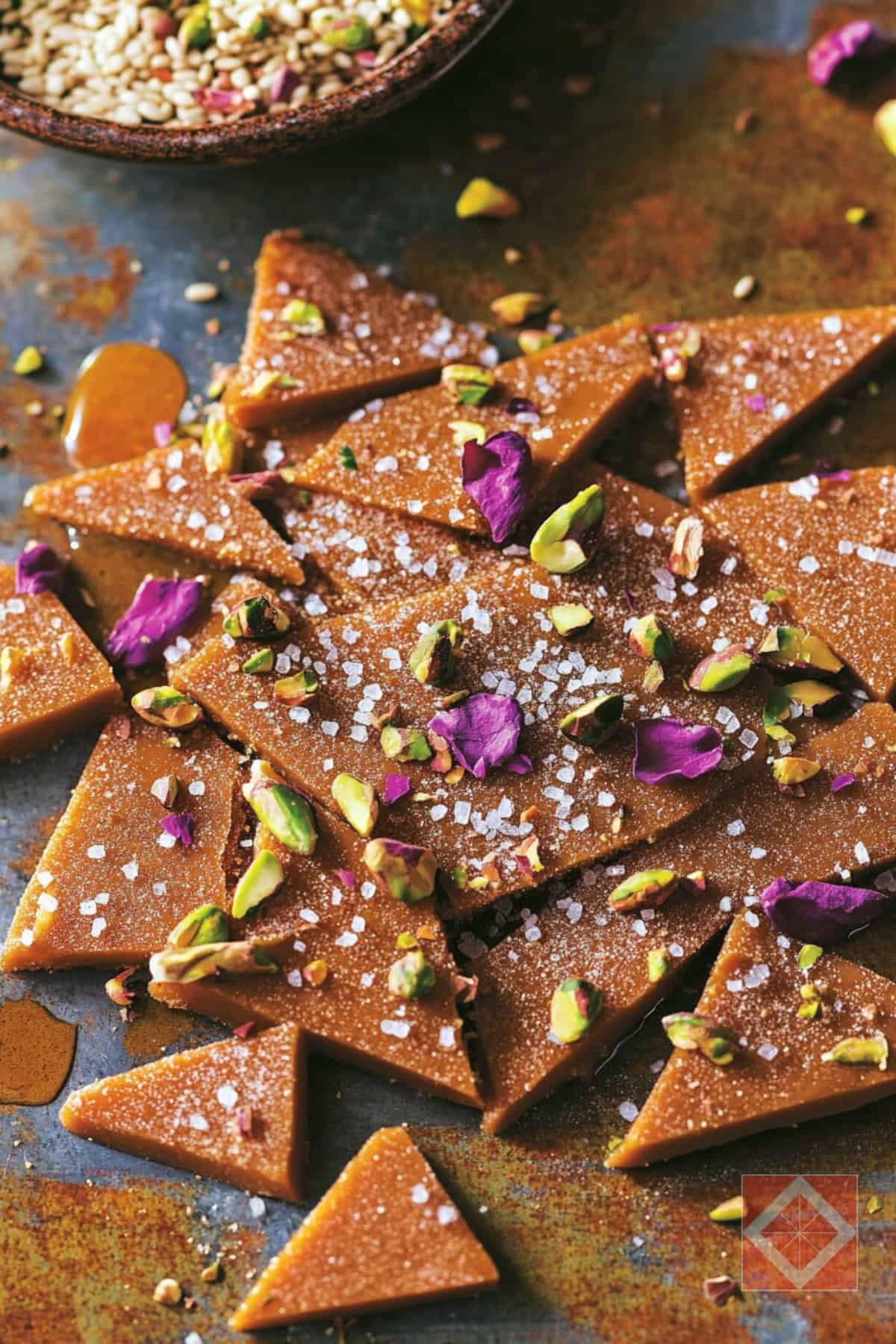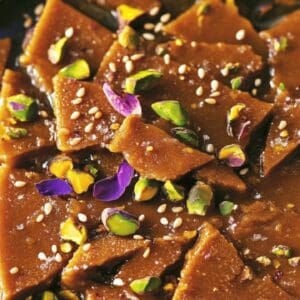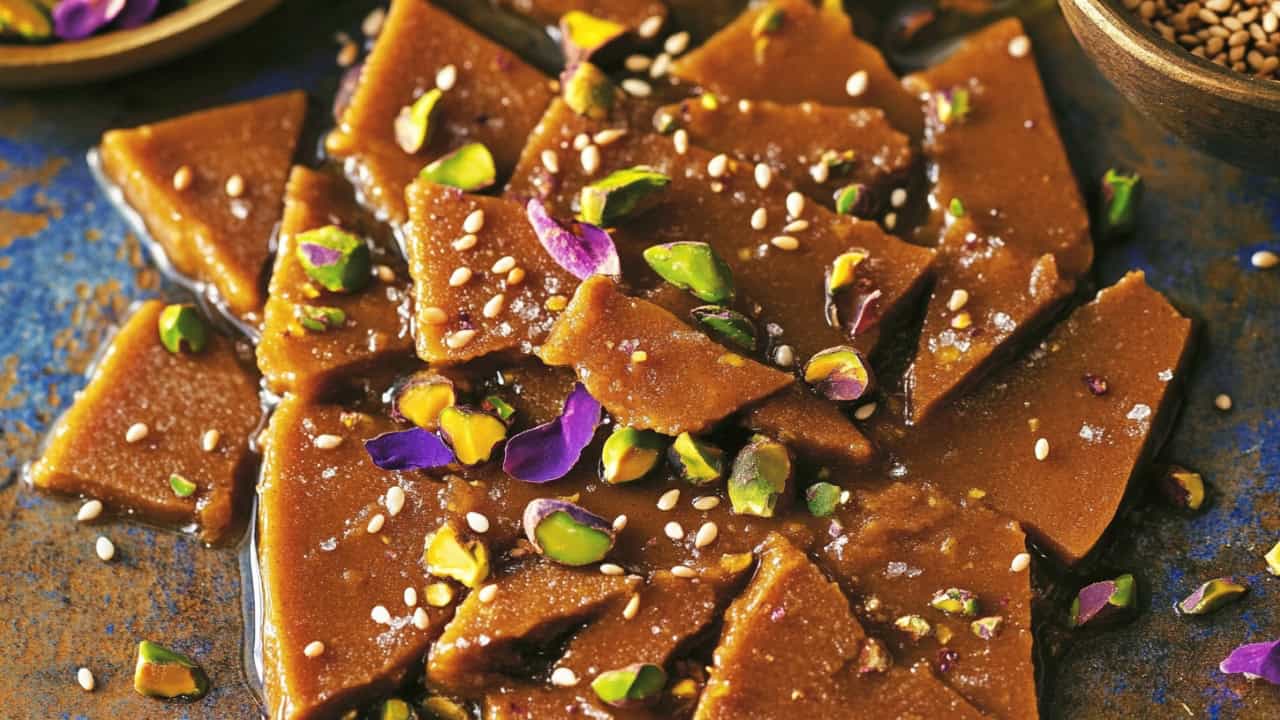There’s something about makshufa that immediately pulls you in—it’s nutty, floral, chewy, and laced with the kind of richness that feels indulgent without being over-the-top.
I remember the first time I tried it at a Persian New Year gathering; it was nestled among other sweets but stole the spotlight. The rosewater scent hit first, then the saffron notes came through, all wrapped up in a sesame-honey crunch that was unlike anything I’d ever had.
Now, it’s a go-to when I want something that feels special, whether for holidays or just a Tuesday sweet fix.
A Traditional Persian Treat with a Modern Twist

Makshufa is rooted in Persian culinary tradition, blending time-honored flavors like rosewater, saffron, and pistachios in a uniquely satisfying candy.
Its texture sits somewhere between brittle and chewy, and it’s often compared to a more delicate version of peanut brittle—without the peanuts, of course.
But even though it leans into heritage, this isn’t a recipe that feels outdated or stuck in the past. With simple swaps, makshufa can even go vegan or be tailored for paleo preferences.
Flavor Profile: Rich, Floral & Lightly Sweet
What sets makshufa apart is its unforgettable flavor. It’s sweet, but not cloying. Floral, but not perfume-y. The blend of rosewater and saffron gives it a sophisticated edge, while sesame oil adds earthy depth.
Each bite gives you:
- A soft yet snappy texture, especially when cooled properly
- A hint of floral aroma from rosewater that elevates the candy
- Nutty richness that’s surprisingly filling for such a small piece
- Optional sesame seed crunch for extra texture and contrast
The balance here is everything—sweet meets savory, chewy meets crisp, and rich meets fragrant.
Perfect for Holidays, Gifting, or Meal Prep Ideas
One of the best things about makshufa is how versatile it is. You can make a batch and store it for up to a week in the fridge, which makes it perfect for everything from party favors to lunchbox treats.
Here’s how you can use it:
- Break into shards and serve at celebrations or tea gatherings
- Wrap in parchment for elegant edible gifts
- Store in airtight containers for weekly snacking
- Serve alongside fruit or dried dates for a Middle Eastern dessert board
It’s also a brilliant addition to Eid, Nowruz, or Diwali spreads where sweets are the centerpiece.
Smart Substitutions to Match Your Lifestyle
Makshufa is naturally gluten-free and vegetarian, but it’s also easy to customize based on what you have or how you eat.
Try these smart substitutions:
- Use blanched almonds instead of pistachios for a milder flavor
- Swap honey for maple syrup or agave for a vegan version
- Add a pinch of cardamom for an Indian-inspired twist
- Toast the nuts first for deeper flavor and crunch
Even the type of sugar can be adjusted—coconut sugar gives a more caramel-like taste, while cane sugar keeps it clean and classic.
Tips to Nail Texture & Flavor Every Time

While this is a simple recipe, a few tweaks can make your makshufa go from good to unforgettable. Here’s what I’ve learned from making it over and over:
- Use a candy thermometer to avoid overcooking and burning
- Chill your baking sheet slightly before pouring for quicker set
- Stir constantly once the sugar melts—don’t step away!
- Sprinkle sesame seeds immediately for them to stick
- Store in the fridge to maintain shine and prevent stickiness
Whether you’re making it for the first time or it’s become part of your weekend routine, these tips help keep the results consistent.

Makshufa Recipe
Equipment
- food processor
- Large saucepan
- Large baking sheet (lined with aluminum foil and lightly sprayed)
Ingredients
- 2 cups unsalted, shelled pistachios or blanched almonds
- 1⅓ cups granulated sugar
- Pinch of saffron threads
- 3 tablespoons rosewater
- 1 cup sesame oil (untoasted)
- ⅔ cup honey
- Sesame seeds optional (for garnish)
Instructions
- Line a large baking sheet with aluminum foil and lightly coat it with nonstick spray. Set aside.
- In a food processor, pulse the pistachios or almonds into a fine powder. Add the sugar and mix to combine. Stir in the saffron threads and rosewater.
- In a large saucepan, heat the sesame oil over medium-high heat for 5 minutes. Lower heat and carefully add the honey, stirring constantly. Simmer until a light layer of foam forms on the surface, about 5 minutes.
- Gently pour in the nut-sugar mixture, taking care to avoid splashing. Stir continuously until the mixture is fully combined and homogeneous. Raise the heat to medium and stir constantly until thickened—about 15 minutes. Use a candy thermometer to monitor the temperature; the mixture is ready at 270°F. For a firmer and less sweet candy, heat to 280°F–290°F but do not exceed this range to avoid burning.
- Remove from heat and quickly pour the mixture onto the prepared baking sheet. Spread it evenly. Optionally, spoon into dollops. If using sesame seeds, sprinkle them on top immediately before the candy sets.
- Let the Makshufa cool completely at room temperature for about 20 minutes. Serve or store in the refrigerator to preserve texture and sheen.
Notes
- Once cooled, Makshufa can be broken into brittle-like shards or kept in spooned shapes.
- The candy is best served fresh but stores well in the refrigerator for up to a week.
- Blanched almonds create a smoother base, while pistachios offer a richer green hue and flavor.
Davin is a jack-of-all-trades but has professional training and experience in various home and garden subjects. He leans on other experts when needed and edits and fact-checks all articles.

